Buy IGNOU BAVTM Project for BTMP 142
IGNOU BAVTM Project is a preliminary type of research in BAVTM Programme. This is an impartial investigation. You will be responsible for the entire process, from start to finish. Project Work aims to provide practical experience. Throughout the IGNOU BAVTM Project, you will Students are expected to apply their knowledge of a specific theme from their course work in relevant subjects. This involves applying course knowledge to real-world tourism scenarios.
Your Project Work BTMP 142 earns six credits. You will need approximately 180 study hours to complete your IGNOU BAVTM Project. The degree will be awarded upon satisfactory completion of your project. To complete the degree successfully, a minimum of 40% marks (Grade D) are required. We prefer a typed and bound copy of your project work. If typing is difficult, hand-write your work neatly and legibly on one side of the page. Annexure B specifies the front page format. Project work typically ranges from 6000 to 7500 words. When selecting a project theme, consider your estimated study hours and work time. The goal is to express you fully within the word limit.
Whatsapp us to get the Personalized (Customized) IGNOU BAVTM Project Report and Synopsis for BTMP 142
Download Link for IGNOU BAVTM Project (BTMP 142 PDF)
What factors should be considered when choosing an IGNOU BAVTM Project topic?
When choosing a project topic for the BAVTM Project, consider the following factors to ensure that your project is both feasible and valuable:
1. Relevance to Tourism Management
- Industry Trends: Choose a topic that aligns with current trends and challenges in the tourism industry.
- Practical Application: Ensure that the topic has practical implications or can contribute to real-world solutions in tourism management.
2. Interest and Expertise
- Personal Interest: Select a topic that genuinely interests you to maintain motivation throughout the project.
- Background Knowledge: Consider your existing knowledge and expertise in the area to facilitate a more in-depth analysis.
3. Feasibility
- Availability of Data: Ensure that there is sufficient data available for your research, either through primary or secondary sources.
- Resource Accessibility: Assess the resources you will need, including time, tools, and access to stakeholders or locations.
4. Scope and Complexity
- Project Scope: Define a clear scope to avoid an overly broad or narrow focus. The project should be manageable within the given timeframe.
- Complexity: Choose a topic that matches your level of expertise and research skills. Avoid topics that are too complex or require extensive resources beyond your capability.
5. Guidance and Support
- Supervisory Support: Ensure that your chosen topic is something that your project supervisor can guide you through effectively.
- Institutional Resources: Check if your topic aligns with the resources and support available from IGNOU.
6. Originality and Contribution
- Novelty: Aim for a topic that offers fresh insights or explores an under-researched area in tourism.
- Contribution to Knowledge: Consider how your research can contribute to the existing body of knowledge or industry practices.
7. Ethical Considerations
- Ethical Issues: Ensure that your topic does not involve ethical dilemmas or conflicts. Research should be conducted in a manner that respects participants’ rights and privacy.
8. Practicality
- Time Constraints: Choose a topic that can be completed within the project duration and deadlines.
- Budget and Costs: Consider any potential costs involved in conducting your research and ensure they are within your budget.
9. Alignment with Academic Requirements
- Project Guidelines: Ensure that the topic aligns with the specific guidelines and requirements set by the IGNOU BAVTM program.
- Assessment Criteria: Select a topic that will meet the assessment criteria and objectives outlined by your course.
10. Potential for Future Research
- Future Work: Consider whether the topic has potential for further research or can be developed into a more extensive study in the future.
Samples of IGNOU BAVTM Project topics for BTMP 142
- Impact of COVID-19 on Local Tourism Businesses
- Tourism Marketing Strategies for Emerging Destinations
- Role of Technology in Enhancing Tourist Experiences
- Sustainable Tourism Practices in Urban Areas
- Cultural Heritage Tourism: Challenges and Opportunities
- Eco-Tourism: A Case Study of [Specific Location]
- Analyzing Customer Satisfaction in Luxury Hotels
- Adventure Tourism: Trends and Future Prospects
- Community-Based Tourism and Its Socio-Economic Impact
- Impact of Tourism on Wildlife Conservation
What is the process for getting the IGNOU BAVTM Project proposal approved?
The process for getting a project proposal approved for the BAVTM Project typically involves several key steps. Here’s a general outline of the process:
Draft the Proposal
Components to Include:
- Title: A clear and concise title for your project.
- Introduction: Background information on the topic, its relevance to tourism management, and the problem statement.
- Objectives: Specific aims of the project, what you intend to achieve.
- Literature Review: Summary of existing research and how your project will build on or differ from previous studies.
- Research Methodology: Detailed explanation of the research methods you will use, including data collection techniques and analysis methods.
- Scope and Limitations: Define the scope of your study and any potential limitations.
- Timeline: A project schedule with milestones and deadlines.
- References: List of sources cited in the proposal.
- Significance: Justification of the study’s importance and potential impact on the tourism industry.
Consult Your Supervisor
- Initial Discussion: Discuss your proposal ideas with your assigned project supervisor to ensure alignment with academic and practical requirements.
- Feedback: Incorporate feedback and suggestions from your supervisor to refine and strengthen your proposal.
Submit the Proposal
- Submission Format: Follow the specific format and guidelines provided by IGNOU for submitting the proposal.
- Submission Location: Submit the proposal to your study center or online through the designated portal if applicable.
Approval Process
- Review by Supervisor: The supervisor will review the proposal for feasibility, relevance, and academic rigor.
- Revisions: You may be required to make revisions based on the supervisor’s feedback.
- Formal Approval: Once the supervisor is satisfied with the proposal, it is submitted for formal approval. This may involve review by a project committee or examination board.
Follow Up
- Confirmation: Obtain written confirmation of the proposal’s approval. This might be an official letter or email from your study center or supervisor.
- Next Steps: Proceed with your research and adhere to the approved proposal’s scope and methodology.
Addressing Issues
- Address Concerns: If the proposal is not approved, address any concerns or feedback provided and resubmit the revised proposal.
- Clarifications: Seek clarification from your supervisor or project coordinator if you encounter difficulties during the approval process.
How do you design a survey for collecting primary data in IGNOU BAVTM Project?
Designing a survey for collecting primary data involves several key steps to ensure that the data you collect is reliable, valid, and useful. Here’s a step-by-step guide to designing an effective survey in BAVTM Project:
1. Define the Objectives
- Purpose: Clearly define the purpose of the survey and the specific objectives you want to achieve.
- Research Questions: Formulate the research questions that the survey aims to answer.
2. Identify the Target Audience
- Population: Determine who your target respondents are (e.g., tourists, hotel managers, travel agents).
- Sampling: Decide on the sampling method (e.g., random sampling, stratified sampling) and the sample size.
3. Design the Survey Questions
- Types of Questions: Use a mix of question types:
- Closed-Ended Questions: Provide specific options for responses (e.g., multiple-choice, yes/no).
- Open-Ended Questions: Allow respondents to answer in their own words.
- Likert Scale Questions: Measure attitudes or opinions on a scale (e.g., strongly agree to strongly disagree).
- Clarity: Ensure that questions are clear, concise, and easy to understand.
- Relevance: Ensure that each question is relevant to your research objectives.
- Avoid Leading Questions: Formulate questions that do not lead the respondent to a particular answer.
4. Structure the Survey
- Introduction: Start with an introduction explaining the purpose of the survey, how the data will be used, and any instructions for completing the survey.
- Demographic Questions: Include questions that gather demographic information relevant to your research (e.g., age, gender, occupation).
- Main Questions: Arrange questions in a logical order, grouping similar topics together.
- Conclusion: End with a thank-you note and any additional instructions, such as how to submit the survey.
5. Pilot Testing
- Test Survey: Conduct a pilot test of your survey with a small group of respondents to identify any issues with the questions or format.
- Feedback: Collect feedback from pilot respondents and make necessary revisions.
6. Administer the Survey
- Distribution Method: Choose the method for distributing the survey (e.g., online, in-person, via mail).
- Accessibility: Ensure that the survey is accessible to all potential respondents, considering any language barriers or disabilities.
- Follow-Up: Send reminders to increase response rates if necessary.
7. Collect and Analyze Data
- Data Collection: Gather responses and ensure data is stored securely.
- Data Analysis: Analyze the data using statistical methods or qualitative analysis tools, depending on the type of data collected.
8. Report Findings
- Presentation: Present the survey findings in a clear and organized manner, using charts, graphs, and summaries as needed.
- Interpretation: Discuss the implications of the findings in relation to your research objectives and questions.
How is the IGNOU BAVTM Project evaluated and what criteria are used?
The evaluation of your project for the IGNOU BAVTM typically involves several key criteria and processes. Understanding these can help you tailor your project to meet the expectations and requirements. Here’s an overview of how your project is generally evaluated and the criteria used:
Evaluation Process
Submission and Review
- Submission: Submit your completed project report by the deadline to the designated authority or through the specified portal.
- Initial Review: The project is initially reviewed for completeness, adherence to guidelines, and basic quality standards.
Evaluation by Supervisor/Examiner
- Supervisor Review: Your project may first be reviewed by your project supervisor, who provides feedback and ensures it meets the academic standards.
- External Examiner: The project might also be evaluated by an external examiner or a project committee, who assesses it independently.
Viva-Voce (if applicable)
- Oral Examination: Some programs require a viva-voce, where you present your project and answer questions from a panel of examiners. This tests your understanding and ability to discuss your research in depth.
Evaluation Criteria
Research Objectives and Relevance
- Clarity of Objectives: Are the research objectives clearly defined and relevant to the field of tourism management?
- Relevance to Industry: Does the project address a relevant issue or topic in tourism management?
Literature Review
- Depth of Review: Is there a comprehensive review of existing literature related to the topic?
- Integration: How well does the literature review integrate with the research objectives and methodology?
Methodology
- Appropriateness: Are the research methods appropriate for addressing the research questions?
- Execution: Was the methodology executed effectively, including data collection and analysis?
Data Collection and Analysis
- Accuracy: Is the data collected accurately and ethically?
- Analysis: Is the data analysis thorough and appropriate? Are statistical or qualitative methods used correctly?
Findings and Interpretation
- Presentation of Findings: Are the findings presented clearly and logically?
- Interpretation: Are the findings interpreted correctly in the context of the research questions and objectives?
Report Structure and Writing
- Organization: Is the report well-organized with a clear structure, including introduction, methodology, findings, discussion, and conclusion?
- Clarity and Style: Is the writing clear, concise, and free of grammatical errors? Is the report professionally formatted?
Originality and Contribution
- Originality: Does the project offer new insights or approaches in the field of tourism management?
- Contribution to Knowledge: How significant is the contribution of the project to existing knowledge or practice?
Practical Implications
- Applicability: Are the practical implications of the findings well-discussed? Can the results be applied to real-world scenarios or problems in tourism management?
Adherence to Guidelines
- Compliance: Does the project adhere to the specific guidelines and requirements set by IGNOU for format, length, and content?
- References and Citations: Are sources correctly cited and referenced according to academic standards?
Presentation and Viva-Voce (if applicable)
- Presentation Skills: If a viva-voce is conducted, your ability to present the project clearly and respond to questions is evaluated.
- Defence of Work: Your ability to defend your research choices and findings during the viva-voce.
Is it possible to do a comparative study between two tourist destinations?
Yes, it is definitely possible and often quite valuable to conduct a comparative study between two tourist destinations in IGNOU BAVTM Project. Such studies can provide insights into differences and similarities in various aspects of tourism and can help stakeholders make informed decisions. Here’s a guide on how to approach a comparative study between two tourist destinations:
1. Define the Objectives
- Purpose: Clearly outline the objectives of the comparative study. For example, you might want to compare the overall tourist satisfaction, the effectiveness of marketing strategies, or the impact of tourism on the local economy.
- Scope: Determine what specific aspects or variables you will compare (e.g., tourist attractions, accommodation quality, visitor demographics).
Select the Destinations
- Criteria for Selection: Choose destinations that are comparable in some ways but have distinct differences that make the comparison meaningful.
- Relevance: Ensure that the selected destinations are relevant to your research objectives and that you have access to sufficient data.
Develop a Comparative Framework
- Criteria for Comparison: Identify the criteria or variables that you will use to compare the destinations. These might include:
- Attractions and Activities: Types and quality of tourist attractions.
- Accommodation and Facilities: Availability and standard of hotels, restaurants, and other facilities.
- Visitor Experience: Satisfaction levels, feedback, and overall experience.
- Economic Impact: Contribution to local economy, employment, and business activities.
- Marketing Strategies: Promotional tactics and their effectiveness.
- Environmental and Social Impact: Effects on local environment and communities.
- Measurement: Decide how you will measure each criterion (e.g., surveys, interviews, secondary data).
Collect Data
- Primary Data: Gather primary data through surveys, interviews, or observations from visitors or local stakeholders in both destinations.
- Secondary Data: Use existing data such as tourism statistics, reports, and previous studies related to both destinations.
Analyze the Data
- Comparison Analysis: Analyze the data to identify similarities and differences between the two destinations. Use statistical or qualitative analysis methods as appropriate.
- Contextual Interpretation: Consider the context of each destination when interpreting the data. Factors such as cultural differences, historical background, and economic conditions may influence the results.
Present the Findings
- Organize Results: Present the findings in a structured manner, using tables, charts, and graphs to illustrate comparisons.
- Discuss Implications: Discuss the implications of your findings and how they address the research objectives. Highlight any significant differences or similarities.
- Recommendations: Provide recommendations based on your findings. For example, suggest best practices or strategies that one destination could adopt based on the other’s success.
Ensure Rigor
- Validity and Reliability: Ensure that your study is valid and reliable by using appropriate methods for data collection and analysis.
- Bias: Be aware of any potential biases and try to mitigate them in your research.
Ready to get your IGNOU BAVTM Project Report and Synopsis Sample PDF for BTMP 142?
- Call us or WhatsApp us at: 9958947060, 9354637830
- Visit: SHRICHAKRADHAR.COM
-
Sale!
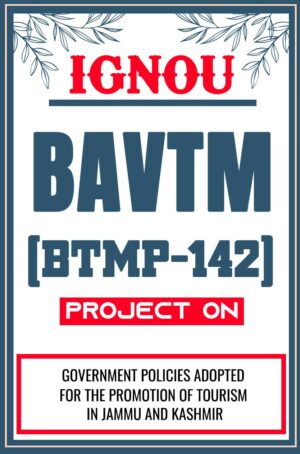
-
Sale!

IGNOU BAVTM Project (BTMP-142) Synopsis/Proposal & Project Report/Dissertation in Hard-Copy (Sample-14)
Original price was: ₹499.00.₹249.00Current price is: ₹249.00. -
Sale!

IGNOU BAVTM Project (BTMP-142) Synopsis/Proposal & Project Report/Dissertation in Hard-Copy (Sample-13)
Original price was: ₹499.00.₹249.00Current price is: ₹249.00. -
Sale!

IGNOU BAVTM Project (BTMP-142) Synopsis/Proposal & Project Report/Dissertation in Hard-Copy (Sample-12)
Original price was: ₹499.00.₹249.00Current price is: ₹249.00. -
Sale!

IGNOU BAVTM Project (BTMP-142) Synopsis/Proposal & Project Report/Dissertation in Hard-Copy (Sample-11)
Original price was: ₹499.00.₹249.00Current price is: ₹249.00. -
Sale!

IGNOU BAVTM Project (BTMP-142) Synopsis/Proposal & Project Report/Dissertation in Hard-Copy (Sample-10)
Original price was: ₹499.00.₹249.00Current price is: ₹249.00. -
Sale!
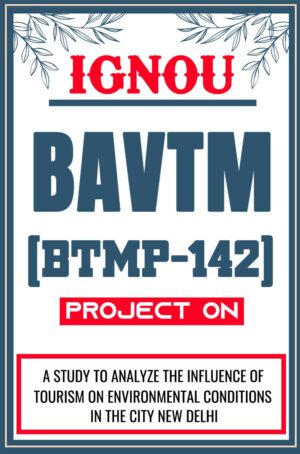
IGNOU BAVTM Project (BTMP-142) Synopsis/Proposal & Project Report/Dissertation in Hard-Copy (Sample-9)
Original price was: ₹499.00.₹249.00Current price is: ₹249.00. -
Sale!

IGNOU BAVTM Project (BTMP-142) Synopsis/Proposal & Project Report/Dissertation in Hard-Copy (Sample-8)
Original price was: ₹499.00.₹249.00Current price is: ₹249.00. -
Sale!

IGNOU BAVTM Project (BTMP-142) Synopsis/Proposal & Project Report/Dissertation in Hard-Copy (Sample-7)
Original price was: ₹499.00.₹249.00Current price is: ₹249.00. -
Sale!
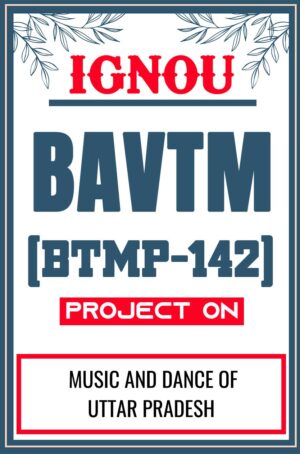
IGNOU BAVTM Project (BTMP-142) Synopsis/Proposal & Project Report/Dissertation in Hard-Copy (Sample-6)
Original price was: ₹499.00.₹249.00Current price is: ₹249.00. -
Sale!
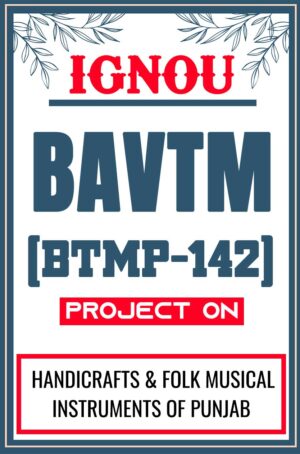
IGNOU BAVTM Project (BTMP-142) Synopsis/Proposal & Project Report/Dissertation in Hard-Copy (Sample-5)
Original price was: ₹499.00.₹249.00Current price is: ₹249.00. -
Sale!
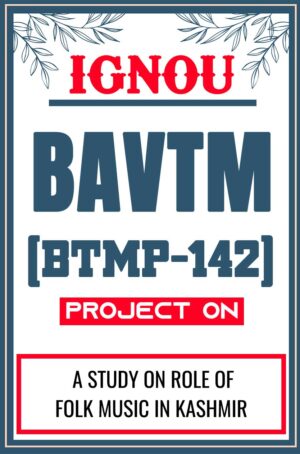
IGNOU BAVTM Project (BTMP-142) Synopsis/Proposal & Project Report/Dissertation in Hard-Copy (Sample-4)
Original price was: ₹499.00.₹249.00Current price is: ₹249.00. -
Sale!
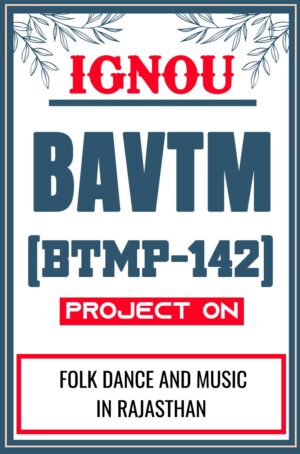
IGNOU BAVTM Project (BTMP-142) Synopsis/Proposal & Project Report/Dissertation in Hard-Copy (Sample-3)
Original price was: ₹499.00.₹249.00Current price is: ₹249.00. -
Sale!
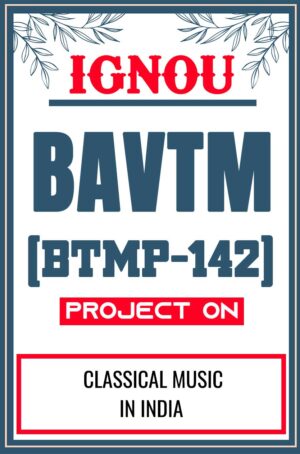
IGNOU BAVTM Project (BTMP-142) Synopsis/Proposal & Project Report/Dissertation in Hard-Copy (Sample-2)
Original price was: ₹499.00.₹249.00Current price is: ₹249.00. -
Sale!
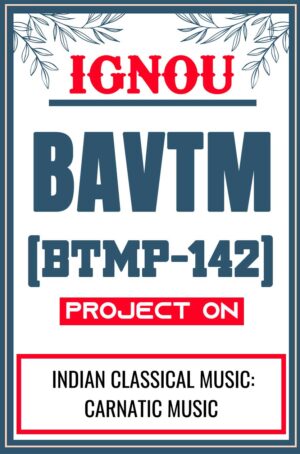
IGNOU BAVTM Project (BTMP-142) Synopsis/Proposal & Project Report/Dissertation in Hard-Copy (Sample-1)
Original price was: ₹499.00.₹249.00Current price is: ₹249.00.
